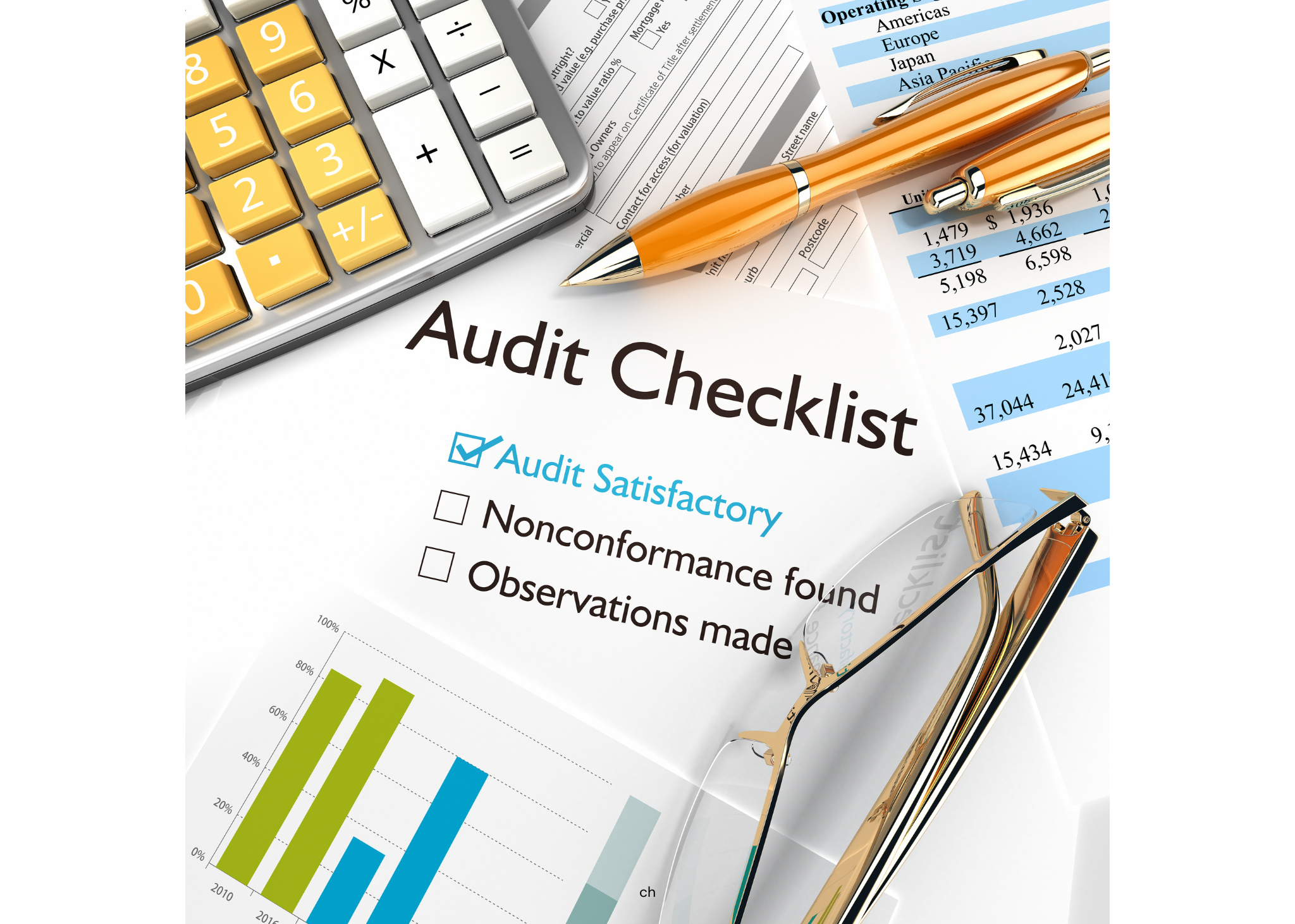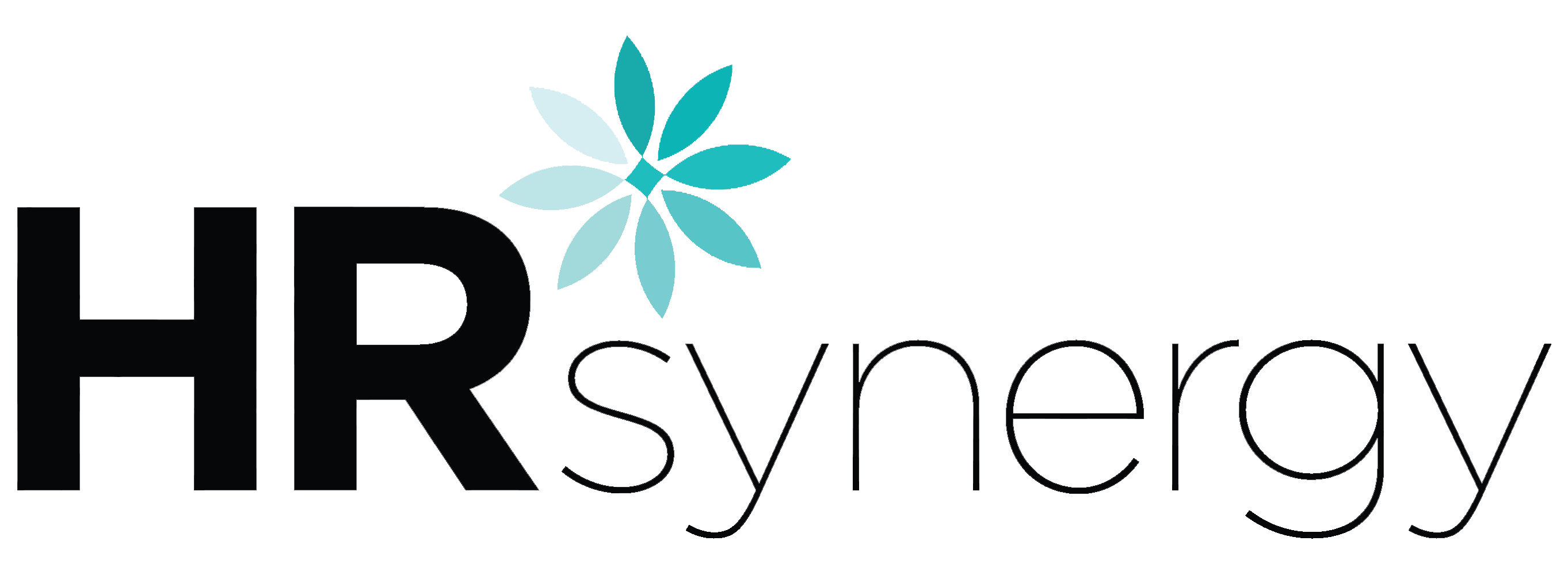Train your managers to be involved with their reports without micromanaging.
Tag: HR Synergy
The Importance of Compensation Analysis
Is Your Compensation Package Competitive?
A company-wide compensation analysis may sound like a lot of effort, but it’s a good practice for employers to periodically review all positions throughout their organization. This helps ensure they are offering competitive wages for attracting and retaining employees.
More Than Money
Compensation isn’t just about wages. Paid time off, health benefits, even stock shares are all things that make up the benefits that attract and retain employees. Some industries, like business and finance, are going to be more competitive with compensation than others, such as nonprofits and healthcare. A compensation analysis helps employers gain an understanding of an appropriate compensation package to attract and retain key employees.
Many think that money is the biggest factor in employee retention, but that simply isn’t the case. While wages and hours worked are crucial to an employee’s happiness, about 88% of employees leave for reasons beyond the paycheck. Making sure employees feel valued, appreciated, and taken care of is essential to keeping them happy in their jobs.
Finding the balance between competitive wages, benefits and proper compensation for the value of an employee’s work is hard to do. When good workers feel valued for their work, they are more likely to stay. If they don’t, high qualifying jobs go to less qualified, lower-quality workers. Employers often invest a lot of time and resources on employees that are not quite at the right level. Good employees will not stay long if they don’t feel valued and are not paid fair wages for their work.
Compensation Analysis as a Retention Tool
An annual or bi-annual compensation analysis, which incorporates salary surveys and salary benchmarking, is an invaluable retention tool. This will help show if your company is paying its employees fair and competitive wages while taking into consideration the responsibilities they are carrying out.
Compensation Analysis Services
A thorough compensation analysis helps you attract, retain and engage the best people in the most cost-effective way possible. Not sure where to start? Contact the professionals at HR Synergy today.
Can Your Company Survive a DOL Audit?

A Department of Labor audit can have a significant impact on your organization, costing your company anywhere from $500-$5,000,000 in fines and penalties. The first step to surviving an audit is knowing what to expect and being prepared.
The Department of Labor is looking more closely than ever before for potential employers who are not following the rules. Some of the main reasons for the Department of Labor to conduct an audit are employee complaints and, in some cases, just plain bad luck.
Schedule your Mock DOL Audit before it’s too late!
By conducting a mock DOL audit, we can gather information about your company’s employment practices throughout the employee life cycle. This information helps to determine your potential exposure in the event of a real audit. We identify areas of improvement, create an action plan to improve compliance and help you put systems into place.
We recently conducted a mock DOL audit for a client and we uncovered some main areas to focus on in case of a real DOL audit. Some of the items our audit uncovered included:
- Outdated federal and state labor laws posters.
- Risk of HIPPA and Personal information for possible identity theft with employee file practices.
- I-9 form non-compliance and confidentiality exposure.
- Inaccurate time keeping records.
- Inconsistent pay practices.
Potential fines for this small company were approximately 3.2 million dollars if the Department of Labor was conducting an audit.
Are you 100% confident that your business would ace a DOL audit? Not sure, call HR Synergy at (603) 261-2402 to schedule a mock audit to help you identify your compliance exposure. We recommend conducting a mock audit annually.
Written By: Michelle Gray and Kayla Hines, HR Synergy, LLC
Image rights: Boris Dzhingarov https://www.flickr.com/photos/81894496@N06/15896297412

Why You Need a Summer Dress Code Policy
During the summer months, many of your employees may begin to dress down. Some may even cross the line in terms of what is appropriate for the workplace. In this month’s HR Synergy blog, we discuss why you need a summer dress code policy and offer guidelines on developing one for your workplace.
Presenting a Positive Image for Your Company
Of course, you want all of your employees to present a positive image for your company. Inappropriate workplace attire—especially that which is offensive or distracting—reflects poorly on your brand. But what you consider inappropriate may seem quite acceptable to someone else. By developing a summer dress code policy, you will set clear expectations for both employees and management, and help keep things cool as the temperatures rise.
But before you can set expectations on appropriate workplace attire, you need to decide on the formality of your workplace dress code, based on the standards of your industry. Is it formal/professional, business casual, or casual? “At many companies, this will also vary according to the amount of interaction employees have with customers,” notes HR Synergy President Michelle Gray.
Guidelines for Developing a Summer Dress Code Policy:
- Put Your Summer Dress Code Policy in Writing
Your summer dress code policy should be a formal document that is included in your employee handbook. Copies of the policy should be easily seen in heavily-trafficked areas, including hallways, meeting rooms, break rooms, and restrooms. “We encourage our clients to review the policy at the start of the summer season during staff meetings,” Gray notes. This ensures there is no confusion about the policy.
- Apply Your Summer Dress Code Equally
When writing your workplace dress code policy, be careful not to focus more on one gender than the other. “I often find that businesses tend to focus on more on female dress attire,” Gray says. To be effective, your workplace dress code policy needs to be applied equally to all employees, regardless of gender, age, or level.
- Be Specific
As noted, the purpose of your summer dress code policy is to set clear expectations for both employees and management. Thus, you should provide specific examples of what attire is not acceptable for your type of business. Here are some considerations and questions to get you started:
- Parameters for dress and skirt hemlines (e.g. no more than 2 inches above the knee)
- Pant length requirements (i.e. Are capris or shorts allowed?)
- Attire that is not permitted, such as T-shirts, tank tops, low-cut shirts, halter tops, crop tops, sweatpants, sweatshirts, athletic wear, logo wear, jeans, or leggings
- Reminders that all clothing should be ironed, clean, and free of holes and stains
- Should men’s shirts be tucked in and must they have collars?
- Are sleeveless tops allowed? Is there a minimum strap width requirement?
- What about footwear? Are sandals and flip-flops allowed?
- Is there a Friday “jean day” and are there any restrictions (e.g. rips and holes, color/fading, etc.)?
- Summertime is also a good time to restate any policies your company may have around the visibility of tattoos.
- Explain the Consequences
Your summer dress code policy needs to state the consequences for failing to comply with it. Also, any special events or circumstances that can alter the dress code should be outlined in your policy and communicated to your employees.
Whether you need help developing employee policies, improving employee communication, or increasing employee morale or productivity, the professionals at HR Synergy are here to help. Contact us today!
Pre-Employment Drug Testing
One of the most important aspects of running a successful business is operational efficiency, and that extends through every level of a company’s infrastructure, from the way the computer network is maintained to the system of management used to organize employees. But there’s one area that has, in recent years, grown in importance, and that is hiring. After all, the hiring process is an extremely critical component of a workplace that can potentially affect every level of a company. When there’s an absence in an important position, work suffers. When a new person is hired, resources must be diverted for orientation or training, if it’s required. And if an employee resigns or is dismissed, this creates another hole that makes work challenging for everyone.
This is why now, more than ever, hiring the right person is an incredibly important aspect of management. And therefore, pre-employment drug testing can play a vital role in making sure that not only does the right person get the job, but no time, money or other resources are wasted on the wrong people holding onto the job for some critical period, only to create more problems with their inevitable dismissal. Often when hiring a liability, you end up owning that liability.
A person’s private life is their own affair, there’s no argument about that. However, when private activities begin to interfere with professional obligations, then it becomes a problem not just for the individual but for the organization that individual is affiliated with. Pre-employment drug testing is one of the best ways to keep problems from even occurring in the first place, and is an effective, front-line defensive and preventive measure to ensure that a working, efficient, established system in a workplace continues to operate that way without disruption.
An established, scrupulously applied pre-employment drug testing program can help a company hire the right candidate for that job!
To set up your pre-employment drug testing program call Lynn at 603-974-1030 or email [email protected].
Southern New Hampshire,
LLC, 24 Stickney Terr Unit 5,
Hampton, NH 03842
Top 5 HR Headaches to Avoid
Minimize HR Headaches and Avoid Costly Litigation
Human Resources is an important part of the functionality of any company. If it is not managed properly it can create a lot of headaches and cost employers thousands in legal fees and fines. Business owners need to have the proper policies and procedures in place, and they must manage and enforce those policies accordingly.
In order to minimize HR headaches and avoid litigation, it’s important to avoid these common HR mistakes. The legal problems most business owners encounter tend to fit into the following areas:
Employee Misclassification: Employers who improperly classify workers can run into serious penalties with regards to taxes, withholdings and overtime wages. The federal government has set national standards, and some of the key factors to consider are whether the employer has control over the individual’s work and provides him or her with the materials or tools needed to complete that work. If so, the worker will likely be deemed an employee, rather than a contractor. Full-time employees are eligible for overtime pay. Overtime pay varies from state-to-state, in some states employees must receive overtime pay if they work more than 8 hours a day when most states set their limits solely on how many hours they work in a week.
Lunch and Break Time: Employers can run into trouble if employees choose to stick around the workplace during their breaks. The same rule applies to workers who prefer to eat lunch at their desks. Conservative solutions to the problem include creating break rooms where no work is allowed, requiring employees to leave the premises for their entire break and recording the time accurately on their time card.
Employee Handbook: All employers, regardless of size, should have an employee handbook to help ensure that employees receive important information about company guidelines, procedures, and benefits. A well-written employee handbook can set expectations with regards to performance and conduct, address routine employee questions and satisfy various legal and regulatory requirements by communicating certain information to employees.
Discrimination and Harassment: Discrimination and harassment complaints are on the rise and they can spring up in just about any workplace. Employers need to familiarize themselves with which classes of individuals have certain discrimination protections under the law. It’s vital that business owners prepare for such situations before they happen. With the proper training, employers can ensure that decision-makers prohibit workplace harassment and discrimination and shield against a hostile work environment.
Exiting Procedures: Many companies have firing procedures in place but not all companies follow them. Employers can make firing decisions based on gut reactions or emotions but employment lawyers can look back to see whether policies that business owners themselves put in place were carried out appropriately before a firing was executed. The employer is expected to follow the evaluation and review process rather than just fire someone despite the fact the employee has exceptional performance reviews. Employers should document all employment decisions to show that the employer had a legitimate, nondiscriminatory business reason for a possible adverse action and to prove that the individual was given the opportunity to correct his/her performance violations.
Don’t wait until a serious accusation has been made. Seek outside help from HR professionals before it’s too late. HR Synergy, LLC provides outsourced HR Solutions for businesses and nonprofits across the US, from policy development, to risk assessment, to labor law compliance and more. Contact us today for more information.
Recent Updates to the I9 Form
Are You Using the Most Recent Version of the I9 Form?
 USCIS released a revised version of Form I-9, Employment Eligibility Verification, on July 17. Employers can use this revised version or continue using Form I-9 with a revision date of 11/14/16 through Sept. 17.
USCIS released a revised version of Form I-9, Employment Eligibility Verification, on July 17. Employers can use this revised version or continue using Form I-9 with a revision date of 11/14/16 through Sept. 17.
On Sept. 18, employers must use the revised form with a revision date of 07/17/17 N. Employers must continue following existing storage and retention rules for any previously completed Form I-9.
Revisions to the Form I-9 instructions:
- The name of the Office of Special Counsel for Immigration-Related Unfair Employment Practices changed its new name, Immigrant and Employee Rights Section.
- Removed “the end of” from the phrase “the first day of employment.”
Revisions related to the List of Acceptable Documents on Form I-9:
- We Added the Consular Report of Birth Abroad (Form FS-240) to List C. Employers completing Form I-9 on a computer will be able to select Form FS-240 from the drop-down menus available in List C of Section 2 and Section 3. E-Verify users will also be able to select Form FS-240 when creating a case for an employee who has presented this document for Form I-9.
- Combined all the certifications of report of birth issued by the Department of State (Form FS-545, Form DS-1350 and Form FS-240) into selection C#2 in List C.
- Renumbered all List C documents except the Social Security card. For example, the employment authorization document issued by the Department of Homeland Security on List C will change from List C #8 to List C #7.
If you need assistance in understanding the procedures for completing the I-9 forms and your responsibilities to ensure compliance, give us a call at (603) 261-2402.
Inclusion–Workplace Diversity
If you’ve ever heard of the phrase, “Don’t put all your eggs in one basket,” then you should also heed the same advice when it comes to the diversity of your workplace. Put the future of your company in the hands of employees of all different types as companies need a wide array of skills, life experiences, and personality traits in order to succeed.
Work place diversity refers to the variety of differences between people in an organization. Differences can include: race, gender, ethnicity, age, personality, cognitive style, education, background, etc.
Benefits
Diversity has increased significantly over the years so embracing diversity and realizing its benefits can help the success and competitiveness of your business. Your business can hope to gain increased adaptability, a broader range of services, a variety of viewpoints, and more effective execution of duties.
Individuals perceive things differently from one another, and even more so when they come from different backgrounds and cultures. When there are comfortable relations, the communication of various points of view provides a larger pool of ideas which your business can draw from to meet business strategy needs, as well as customer needs more efficiently. Speaking of experiences, when you have a diversified workplace, that gives your company an arsenal of new languages, cultural understanding, and more that will allow your company to expand your services to customers and clients on a global scale.
Business that employ a diverse workforce are also able to supply a greater variety of solutions to problems as they bring individual talents as well as experiences when suggesting flexible solutions that can adapt to fluctuating markets and customer demands. All of these things considered, employees will be inspired to perform at a higher degree of ability, thus strategies can be executed resulting in increased productivity, profit, and return on investment.

Challenges
Although workplace diversity comes with many benefits, it is not without its fair share of challenges that complicate the road towards reaping those rewards. When many different individuals are present, there will almost always be differing and opposing opinions as perceptual, cultural, and language barriers need to be overcome. The communication hurdle may result in confusion, teamwork, and low morale when key objectives are ineffectively communicated.
Also, a possible resistance to change may occur that can hinder your business progress towards diversifying your workplace. There might be employees who will refuse to accept a change in the social and cultural makeup of their workplace. They may be too used to the dynamics and processes that have existed, however, it is that type of mentality that silences new ideas and inhibits progress.
Laws
To accompany the trend of increasing diversity in our country, there are a slew of federal laws that are in place to help to ensure possible diversity in workplaces. Most important are the laws dealing with discrimination such as: Title VII of the Civil Rights Act that prohibits most workplace harassment and discrimination; Age Discrimination in Employment Act that governs against age discrimination; Americans with Disabilities Act which prohibits against discriminating against disabled workers or job applicants; ADA Amendments Act etc.
There are also state and local government laws in place that have enacted a variety of equal employment measures, so make sure to check those as well as the plethora of federal laws.

What You Can do to Diversify
By far, the benefits of workplace diversity is greater than the challenges that obstruct the path to it, and it will be worth your while to pursue a very diversified team. In order to overcome these challenges, it is important to build and implement a customized strategy to maximize the effects of diversity. Contacts us at HR Synergy, so we can help you develop and implement strategies and policies that will get you on your way to a diversified workplace culture.
Creating a Culture of Kindness in the Workplace
by Michelle Gray, President, HR Synergy, LLC
Workplace culture is one of the most overlooked, yet important parts of running a successful business. As an HR consultant, I observe situations everyday where employees feel burnt out and unappreciated, and wonder why they stay with their employer. Unfortunately, in many cases, these people are the most talented, loyal, and passionate employees. At a time when attracting and retaining quality employees is both difficult and costly, I have advised many of my clients to work on creating a culture of kindness in the workplace.
What is a Culture of Kindness?
To some, this concept may sound a bit fluffy. What exactly do I mean by kindness? Sure, being kind in the workplace involves caring about a co-worker’s concerns and appreciating their contributions. But it also means recognizing the humanity of a colleague:
- Fully listening when someone speaks to you.
- Looking the person in the eyes with genuine attention.
- Simply acknowledging someone’s presence by saying “hello,” or sharing a casual smile.
- Asking someone if they are feeling better.
- Displaying thoughtfulness without expecting anything in return.
- Pitching in when someone needs a little extra help.
- Picking up coffee for a colleague.
Benefits of Creating a Culture of Kindness in the Workplace
According to research conducted by psychologist Jonathan Haidt, when leaders are polite, respectful, sensitive, or willing to make sacrifices for their teams, employees may feel more loyal and committed to their boss. Another study indicated that when leaders are fair, members of their teams collaborate better and work more productively—together and individually.
In their book, Leading with Kindness, authors William Baker and Michael O’Malley contend that corporate kindness positively impacts profits. They identify six qualities of kind managers—compassion, integrity, gratitude, authenticity, humility, and humor—and believe a kind management style improves employee performance and retention.

Kindness is Contagious in the Workplace
Haidt also found that employees of compassionate leaders are more likely to act in a helpful and friendly manner toward other employees, even when they had nothing to gain. Researchers Nicholas Christakis and James Fowler have also found that if you’re kind, those around you are more likely to act kindly, too.
Kindness Must Come from the Top
As business owners and managers, we are constantly multi-tasking, focused on the “big picture” and the needs of our customers. Frequently, we forget that our employees are also our customers and our greatest asset. Creating a culture of kindness in the workplace begins with us. It has to be part of our corporate DNA. How are you creating a culture of kindness in the workplace?
Outsourced Human Resource Services
HR Synergy provides employers with assistance in all areas of HR, including coaching and consulting, recruiting and retention, employee relations, policy development, labor law compliance, benefits management. and more. Contact us today to learn how your company can benefit from HR Synergy’s experience.

How the Trump Administration May Affect Employers
Before taking office on January 20, President Donald Trump identified several employment-related actions among his administrative priorities. This has left many business owners and HR professionals wondering how the Trump administration may affect employers. Although no one can positively predict the future, here are some key areas that employers and HR professionals should be watching:
Repeal of the Affordable Care Act (ACA)
One of President Donald Trump’s first moves after taking office was signing an executive order to limit what he referred to as the “burdens of the Affordable Care Act,” the first step toward fulfilling his campaign promise to dismantle the law. According to NPR health correspondent Alison Kodjak, President Trump believes the law is hurting the entire healthcare industry. She says President Trump wants to make health insurance accessible to all and ease the burden across the board—not just on individuals, but on insurance companies, hospitals, doctors, and medical device-makers.
This is obviously a sweeping mandate, and according to Kodjack, President Trump and his colleagues on Capitol Hill don’t yet seem to be on the same page about what they want. For the time being, we’ll just have to watch and wait.
Federal Overtime Rule
The Department of Labor’s Federal Overtime Rule remains on hold with an uncertain future. Some speculate that the the injunction could become permanent, while others suggest the new salary threshold may be lowered or the rule’s automatic salary increases eliminated.
Chief of Staff Reince Priebus issued a memo to the heads of executive departments and agencies on January 20, ordering a freeze of federal regulations that haven’t yet gone into effect. This freeze suggests that the Trump administration may reverse the controversial overtime rules. Prior to taking office, President Trump expressed that he favors a small business exemption to the rule. He also characterized the rule as an example of “overregulation.”
While existing rules remain in place, employers will have to make their own decisions on whether it makes sense for them to roll out any planned changes.
Minimum Wage
While on the campaign trail, President Trump supported a $10-an-hour minimum wage, but also said that states should take the lead in this area. The trend of states raising their own minimum wage rates will likely continue.
Immigration
Immigration reform was the centerpiece of President Trump’s campaign. In addition to instituting an immigrant travel ban, President Trump plans to revamp the H-1B visa program that allows highly-skilled foreigners to work at U.S. companies. According to a January 23 draft executive order, we can expect a report within the next 90 days that details the administration’s plans for allocating visas and making the program more efficient.
As part of his immigration plan, President Trump also supports requiring all employers to use E-verify, an employment eligibility verification system. Currently, over 600,000 employers already use the system.
To counteract immigration reform measures put in place by the Obama administration, President Trump may also move to cancel the work authorization granted under Deferred Action for Childhood Arrivals (DACA).
Maternity Leave and Childcare
According to the Society for Human Resource Professionals, although President Trump is calling for decreased deregulation overall, he supports increased regulation in a few areas. On September 13, he unveiled a plan to enhance unemployment insurance to include six weeks of paid maternity leave, similar to California’s program. He is also is calling for increased incentives for employers to provide child care at work.
When Will Changes Take Effect?
Any administration’s changes take time to go into effect. Executive orders can quickly be reversed and regulatory changes typically undergo a notice and comment period. Of course, Congress must still originate new laws and changes to existing laws.
Help Understanding New and Changing Employer Regulations
If you need help understanding new and changing employer regulations, contact the professionals at HR Synergy. Our labor law compliance experts will give you and your management team the knowledge and tools you need to comply with federal and state regulations, avoiding costly fines and penalties. Contact us today!




